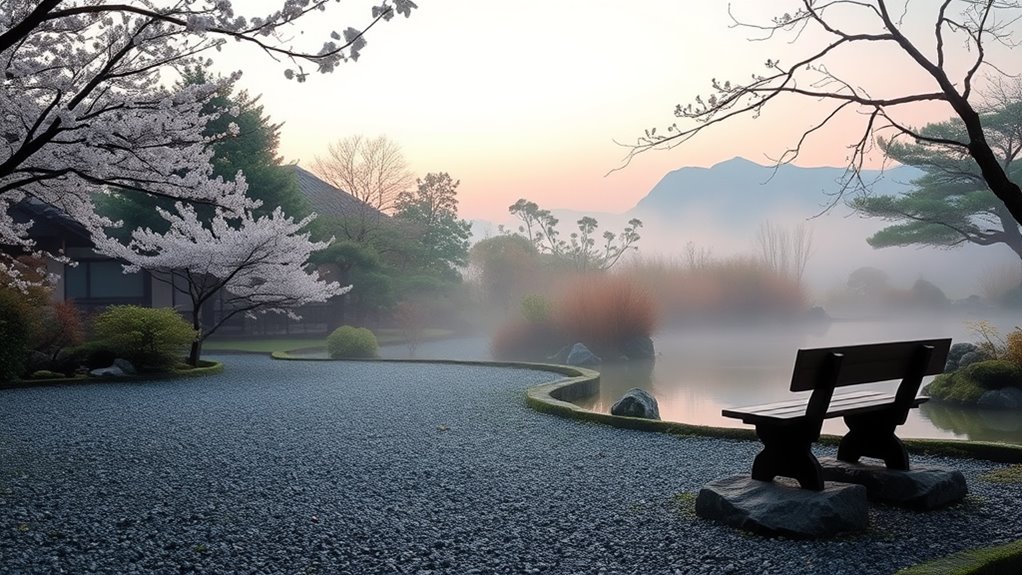Ikigai is a Japanese concept that helps you discover a life filled with purpose by blending what you love, what you’re good at, what the world needs, and what can bring you income. It emphasizes enjoying daily moments and using small joys to create long-term wellbeing and longevity. By understanding these core elements, you can find balance and fulfillment. If you want to explore how to uncover your personal ikigai, keep exploring these ideas further.
Key Takeaways
- Ikigai is a Japanese concept combining passion, skills, societal needs, and income to find life purpose.
- It emphasizes small daily joys and social harmony over grand achievements.
- Originating from the Heian period, ikigai reflects cultural values of community, respect, and long-term stability.
- Discovering ikigai involves self-reflection, mindfulness, and exploring activities that bring fulfillment.
- Practicing ikigai promotes wellbeing, longevity, emotional balance, and social connection.
The Origins and Meaning of Ikigai

Ikigai has deep roots in Japanese history, dating back to the Heian period (794–1185 AD). During this time, the term “ikigai” emerged, combining “iki” meaning life and “gai” meaning value or worth. The suffix “gai” is linked to “kai,” symbolizing a shell and representing value in ancient Japan. Originally, ikigai reflected social roles and duties, especially for older generations, aligning with family and work expectations. Over time, the concept evolved, and in 1966, psychiatrist Mieko Kamiya popularized it academically through her book *On the Meaning of Life*. Today, ikigai signifies a personal sense of purpose, blending internal fulfillment with external contributions, rooted in a rich cultural history that has persisted through centuries. Additionally, modern interpretations recognize that music therapy and other holistic practices can support individuals in discovering and nurturing their ikigai. Recognizing the cultural significance of ikigai enhances its relevance in contemporary life, inspiring many to seek balance and meaning in their daily routines. Moreover, recent studies highlight the importance of community engagement in fostering a sense of purpose, reflecting the social aspects embedded in traditional ikigai. Exploring holistic approaches can further deepen one’s understanding of how to align personal passions with societal roles. Understanding the interplay of tradition and modernity helps us appreciate how this concept continues to evolve and inspire personal growth.
Cultural Significance and Values Behind Ikigai
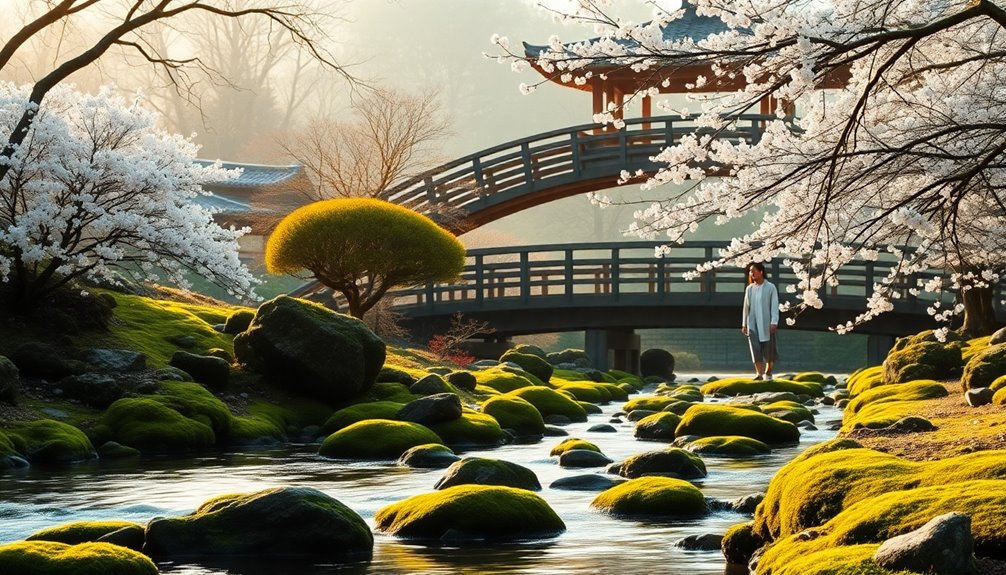
Understanding the cultural significance of ikigai reveals how it embodies the Japanese value of *wa*, or harmony, emphasizing peaceful coexistence between personal desires and community needs. It shows that fulfillment isn’t just individual; it’s intertwined with social contribution and collective well-being. You’re encouraged to balance your passions with what benefits others, fostering social cohesion and mutual respect. Traditional roles—like artisans, farmers, and samurai—illustrate how ikigai was expressed through fulfilling societal duties, reinforcing community stability. Family responsibilities and community bonds are essential, highlighting that personal purpose aligns with collective harmony. Vetted – ID Times Ikigai isn’t solely self-centered; it’s a shared pursuit rooted in cultural values that promote social integration, respect, and long-term stability within Japanese society. Additionally, the concept of *wa* exemplifies how social harmony is a core principle that sustains these cultural practices and collective well-being. Recognizing the importance of social roles reflects how ikigai is achieved through contributing to the greater good and maintaining societal balance. Furthermore, understanding how cultural values influence individual purpose underscores the deep connection between personal fulfillment and societal expectations. Moreover, embracing community involvement aligns personal goals with societal needs, reinforcing the collective nature of ikigai.
Exploring the Core Components of Ikigai
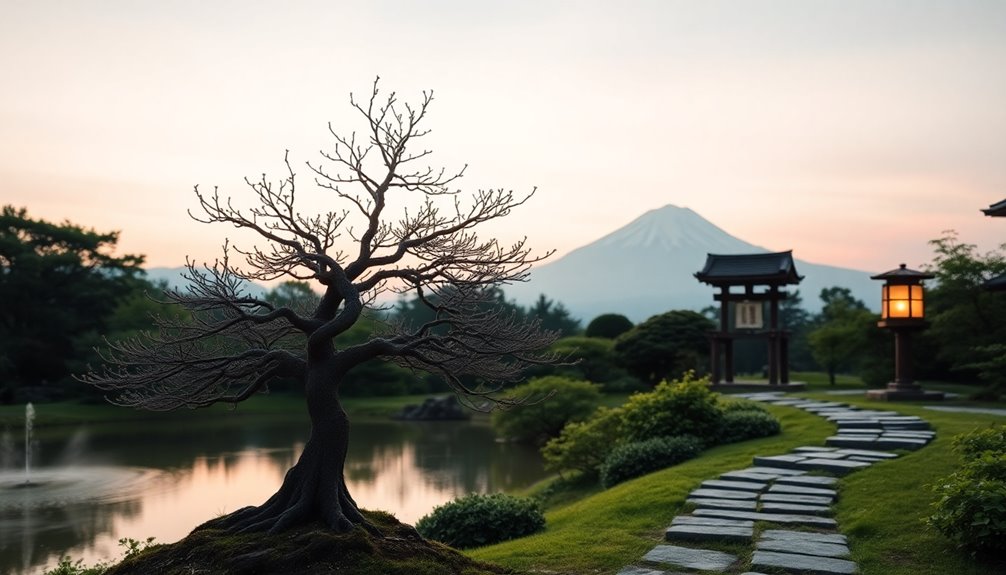
At its core, ikigai is about uncovering the interconnected elements that give life meaning and purpose. It’s built around four key components: what you love, what you’re good at, what the world needs, and what you can be paid for. These elements form a diagram showing their overlaps, where true ikigai resides. This concept combines passion, talent, purpose, and fulfillment, guiding you to a life that feels meaningful. Your passion fuels what you love; your skills connect to what you’re good at; societal needs align with your mission; and your profession ensures you can sustain yourself financially. Finding where these parts intersect is the essence of ikigai, helping you craft a fulfilling, balanced life rooted in purpose and joy.
Benefits of Embracing Ikigai for Wellbeing and Longevity
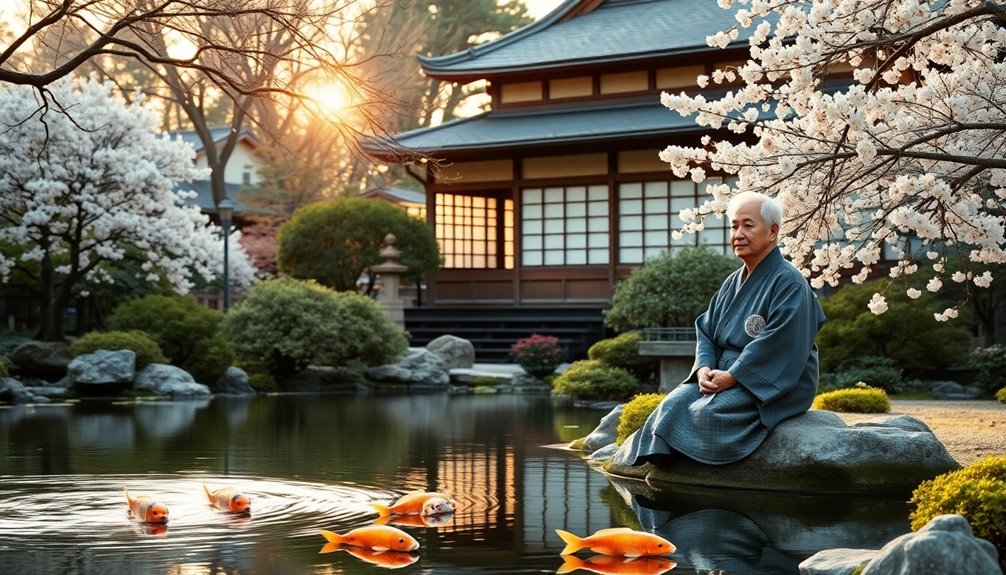
Embracing ikigai can profoundly enhance your overall wellbeing and extend your lifespan. When you find purpose in daily activities, you’re more likely to engage in healthy behaviors like exercise and nutritious eating, which improve your physical health. Studies show that ikigai reduces the risk of functional disability and dementia, helping you stay independent longer. Mentally, it decreases depressive symptoms and boosts happiness, giving you a sense of fulfillment and emotional stability. Socially, ikigai encourages participation in community and relationship-building, providing essential support. Research suggests that having ikigai can add years to your life by promoting heart health and reducing mortality risks. Additionally, understanding the importance of fetal development during pregnancy highlights how purpose-driven behaviors can positively impact overall health. Furthermore, the holistic benefits of ikigai are rooted in its influence on both mental and physical wellbeing, emphasizing a balanced approach to life. Recognizing the influence of cultural practices and traditional rituals on mental health can deepen your appreciation for the holistic benefits of ikigai. Incorporating dream analysis techniques to explore subconscious motivations may enhance your journey toward discovering your ikigai. Overall, embracing ikigai offers a holistic path to healthier, happier, and longer life.
Common Misunderstandings About Ikigai
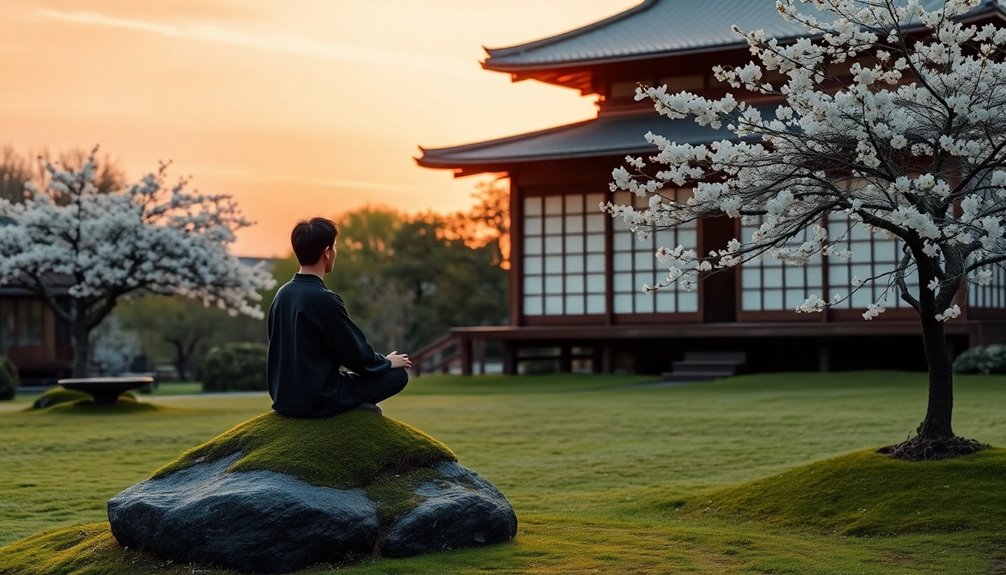
Many people mistakenly believe that ikigai is a single, all-encompassing purpose in life, but in reality, it often resides in the small joys and everyday activities that bring you satisfaction. It’s not about finding one grand mission; instead, it’s about appreciating the simple moments that make life meaningful. Some think ikigai must be tied solely to work, but it’s broader, including hobbies, relationships, and personal fulfillment. The popular Venn diagram suggests it’s a formula to find by intersecting passion, skill, pay, and contribution, but this oversimplifies the concept. In Japan, ikigai isn’t about achievement or monetization; it’s about enjoying life’s small pleasures. Western interpretations often distort its true meaning, focusing on purpose instead of everyday contentment. Understanding the different cookie categories and their purposes can also help appreciate how small, intentional choices contribute to a balanced and fulfilling life. Recognizing that AI security involves ongoing safety measures can also deepen our appreciation for maintaining harmony in daily routines. Additionally, embracing cultural nuances helps us see how ikigai varies across different societies, enriching our understanding of personal fulfillment. Recognizing the importance of self-awareness can further enhance our ability to find joy in everyday moments and make meaningful choices, especially when considering home theater projectors or other personal investments that reflect one’s values and preferences.
Practical Steps to Discover Your Personal Ikigai
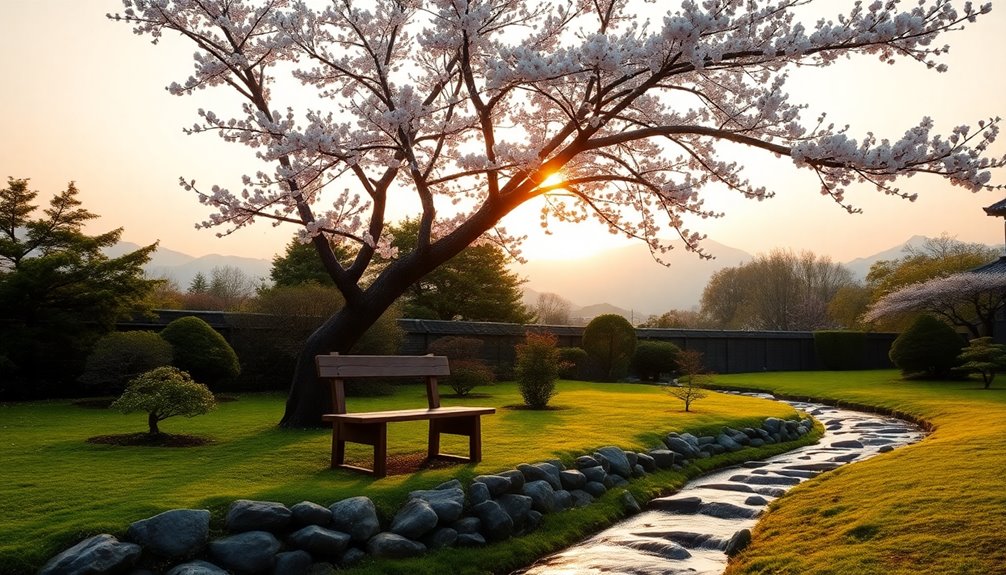
Discovering your personal ikigai involves practical, mindful steps that bring clarity and purpose to everyday life. Start with mindfulness and self-reflection—these practices create space to explore your passions and skills. Use the ikigai diagram to reflect on what you love, what you’re good at, what the world needs, and what can be paid for. Experiment with activities, seek feedback, and learn from experiences to align actions with your insights. Embrace your personal values to deepen understanding of your ikigai. Incorporate continuous learning by trying new things and expanding your skills. Keep a journal to document thoughts and progress. Engaging in activities that support mental clarity, such as mindfulness practices, can enhance your self-awareness. Additionally, exploring well-being tips can help you maintain a balanced mindset while pursuing your purpose. Understanding the Gold IRA options available can also inspire you to plan for a secure future as part of your life purpose. By practicing these steps, you’ll gradually uncover your ikigai and cultivate a more meaningful, purposeful life.
Frequently Asked Questions
How Does Ikigai Evolve Over Different Life Stages?
Think of ikigai as a river flowing through your life’s landscape. In childhood, it begins as playful streams of curiosity and simple joys. In early adulthood, it finds its course in passions and careers. By midlife, it deepens into meaningful work and relationships. In older age, it broadens into calm waters of reflection, hobbies, and giving back. Your ikigai evolves, guiding you through each stage with purpose and resilience.
Can Ikigai Be Different for Everyone, or Is It Universal?
You might wonder if ikigai is the same for everyone or if it varies. The truth is, it’s personal—what gives your life meaning depends on your values, experiences, and culture. While some core ideas like purpose and fulfillment are shared, how you find and interpret your ikigai is unique. It’s a flexible concept that adapts to your life, making it different for each person.
How Do Cultural Differences Influence the Concept of Ikigai?
Imagine a garden where each flower blooms differently yet shares the same soil. Cultural differences shape your ikigai, just like soil influences plants. In Japan, it’s rooted in community and daily joys, not individual pursuits. You might see it as balancing work, relationships, and leisure. These cultural nuances, like traditional gender roles or societal expectations, influence what brings you purpose, making ikigai uniquely personal yet culturally grounded.
Is Ikigai Primarily About Personal Fulfillment or Social Contribution?
You might think ikigai is just about personal fulfillment, but it actually balances both personal happiness and social contribution. It encourages you to pursue activities you love while also serving your community’s needs. Combining these elements helps you find purpose, leading to a more meaningful life. So, ikigai isn’t solely about individual satisfaction; it’s about creating harmony between your personal goals and your role in society.
How Can Ikigai Improve Mental Health During Challenging Times?
Imagine you’re sailing through stormy seas; having a steady anchor keeps you grounded. During tough times, ikigai acts as that anchor, giving you a sense of purpose and resilience. It helps reduce stress, anxiety, and hopelessness, supporting mental health. By focusing on what gives your life meaning, you can navigate hardships more effectively, fostering emotional recovery and a stronger sense of well-being even amid life’s challenges.
Conclusion
Embracing your ikigai is like tending a garden—you nurture your passions, values, and talents to bloom into a fulfilling life. When you find that purpose, it becomes the steady sun guiding your days, illuminating your path even in storms. Remember, your ikigai isn’t a destination but a journey of growth and discovery. Keep tending to it with patience, and watch your life blossom into a vibrant tapestry of meaning and joy.
